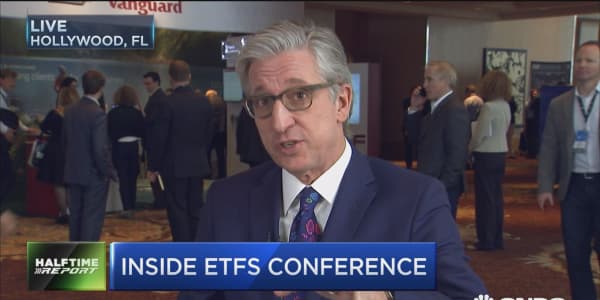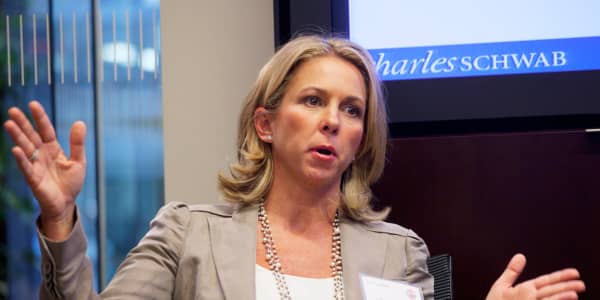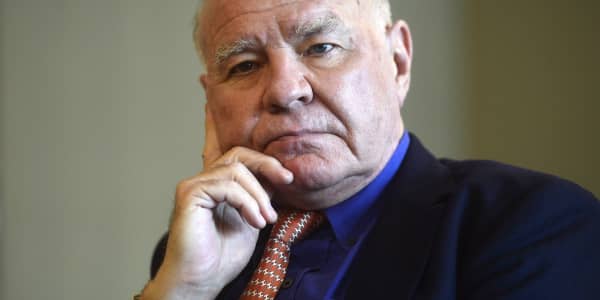Looking for shelter when interest rates finally rise? Ultrashort bond-exchange funds may not be the ticket.
Lots of investors have plowed money into these ETFs in the past few years. Total net assets in the sector has reached over $83 billion, according to Morningstar, a 10.25 percent increase since 2013. But these funds, whose holdings and even maturities vary, may not be as good at hedging against interest-rate rises as investors think, experts caution.
This brand of ETFs typically holds bonds that mature in less than a year. When interest rates rise, ultrashort bond ETFs can jump onto higher rates faster than longer-term bonds.
"Garden variety ultrashort bond ETFs with short maturities are immune to rate increases," said Mark Balasa, chief investment officer at Balasa Dinverno Foltz. "But there's close to zero return." On top of that, he added, no one knows when the Federal Reserve will finally raise rates, anyway.
Read MoreThe biggest fund flops of 2014
So Greg Lessard, president of Aspen Leaf Partners in Colorado, has been steering his clients away from these ETFs. The reason, he explained, is that ultrashort-bond ETFs don't offer enough total return in exchange for the risks investors take. Fees and taxes can take a bite out of low yields.
Guaranteed losses
Lessard points to the PIMCO Enhanced Short Maturity ETF (MINT), which has $3.8 billion in assets. Though the fund currently has a .71 percent yield, you'll need to pay a .35 percent expense ratio. Even more worrisome, the ETF, which trades like a stock, has been near flat in performance. It's up 0.08 percent so far this year, through Jan. 23, according to Morningstar data. Over the past five years through Jan, 23, MINT is up 1.13 on an annualized basis, according to Morningstar.
When you factor in taxes and inflation, returns drop into negative territory, Lessard explained.
Why take the risk of share price declines when you can get the same yield with an insured bank CD?Greg Lessardpresident of Aspen Leaf Partners
"Why take the risk of share price declines," said Lessard, "when you can get the same yield with an insured bank CD?"
Also, the PIMCO fund invests in bonds with higher credit-rate risks and interest-rate risks to get higher yields, added Neena Mishra, director of ETF Research at Zacks Investment Research. Nearly half of the fund's assets are invested in corporate bonds rather than lower-risk government versions.
Read MoreThis nifty ETF maneuver is becoming more common
The PIMCO fund isn't the only ultrashort bond ETF worrying experts, though. For example, investors have also plowed more than $1 billion into the SPDR Barclays Capital 1-3 Month T-bill ETF (BIL). The yield is flat, and the expense ratio is .13 percent. So expenses are higher than your yield, pointed out Thomas Boccellari, an analyst at Morningstar.
Fees count
"And you're guaranteeing yourself a loss with the SPDR ETF," Boccellari added, even though the ETF invests in no-risk government Treasury bills with short maturities. The five-year return is negative .05 percent, through Jan. 23, according to Morningstar data.
Investors also need to understand that trading costs can add up, too, said Boccellari. Buying these ETFs through brokers may mean that you're paying $30 or $50 to buy or sell. "Those costs also eat up yields," he added, "so investors need to be aware of that."
Opt for longer-term bonds instead, say some experts. Lessard likes the iShares 1-3 year Credit Bond (CSJ), which yields .94 percent and is up .39 percent so far this year through Jan. 23, according to Morningstar, and 1.93 percent over five years on an annualized basis. He also likes the Vanguard Intermediate term bond ETF (BIV), which has had even stronger returns. The ETF yields 2.83 percent and is up 2.26 percent this year, through Jan. 23, according to Morningstar data, and 6 percent over five years, through Jan. 23, on an annualized basis.
"These ETFs still carry interest-rate risk, and their prices can decline," said Lessard. "But that risk is offset by higher yields." Investors who reinvest their fund dividends shouldn't need to worry, he added.
Laddering bonds with different maturity dates can also hedge interest-rate risk. "You can give yourself a little return, too," said Balasa at Balasa Dinverno Foltz.
"It's not all or nothing," he said, "but investors should be aware that ultrashort bond ETFs can lose value."
Correction: This version corrected the performance of the PIMCO Mint fund and other ETFs mentioned in this article.




